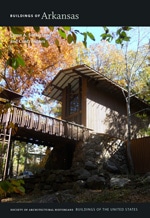Lonoke was founded in 1869 and incorporated on January 22, 1872. The name was derived from a solitary red oak tree (a lone oak) that stood on the site of the present town. The town is situated near the center of the county in a rich agricultural area. W. H. Fuller had planted the first rice crop in Arkansas in the spring of 1897 at Carlisle, and in the early years of the twentieth century, rice became a major cash crop for the area. The Rock Island Railroad route from Memphis to Little Rock made Lonoke an important center. Lonoke’s mild climate, flat land, and access to transportation (trucks on nearby I-40) has made it home to some of the largest aquaculture enterprises in the Delta. In 1928, the nation’s largest state-owned warm-water fish hatchery was built in Lonoke by the Arkansas Game and Fish Commission; today it is the Joe Hogan Fish Hatchery. At 23 Joe Hogan Lane, there is a small visitor center and the rearing ponds. Another fish hatchery is I. F. Anderson Farms (4377 U.S. 70), a major producer of bait fish such as golden shiners, minnows, and black salties.
Writing Credits
If SAH Archipedia has been useful to you, please consider supporting it.
SAH Archipedia tells the story of the United States through its buildings, landscapes, and cities. This freely available resource empowers the public with authoritative knowledge that deepens their understanding and appreciation of the built environment. But the Society of Architectural Historians, which created SAH Archipedia with University of Virginia Press, needs your support to maintain the high-caliber research, writing, photography, cartography, editing, design, and programming that make SAH Archipedia a trusted online resource available to all who value the history of place, heritage tourism, and learning.

